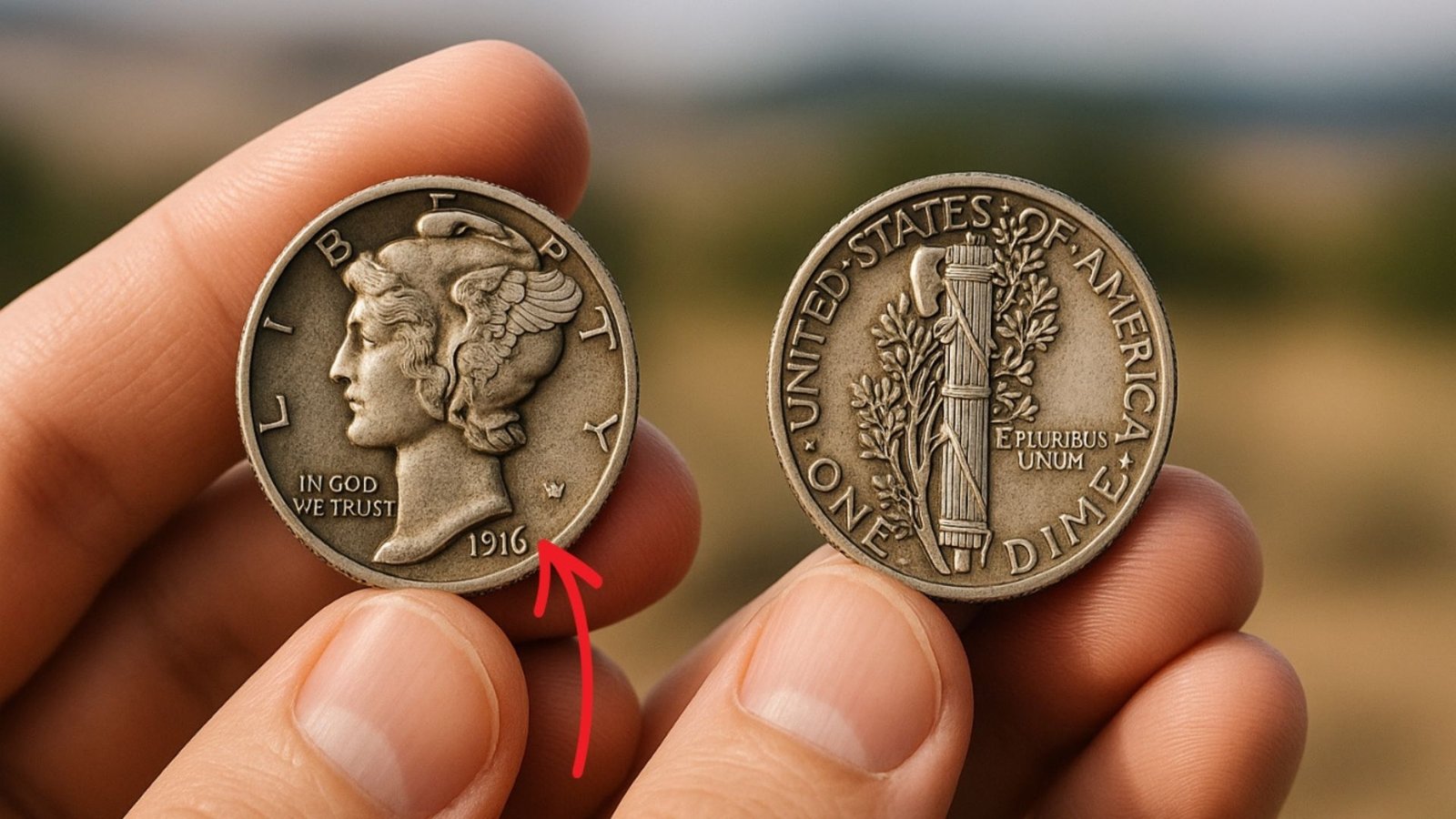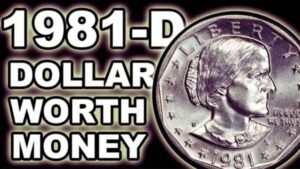Imagine digging through your old coin jar and pulling out a small, shiny dime that could be worth a fortune. That’s the magic of the Mercury Dime – a beloved U.S. coin from the early 1900s that still turns everyday finds into treasure hunts for collectors.
Minted from 1916 to 1945, these silver beauties aren’t just pocket change; they’re pieces of history with values swinging wildly from a modest $25 for common circulated ones to a staggering $207K at top auctions. In this discovery guide, we’ll break it all down in simple terms: what makes them special, how to spot a winner, and tips to cash in big. Whether you’re a newbie hunter or a seasoned collector, get ready to see your spare change in a whole new light. Let’s dive into the world of Mercury Dime values and uncover why these coins are hotter than ever in 2025!
What Exactly Is a Mercury Dime? A Quick History Lesson
The Mercury Dime, officially called the Winged Liberty Head Dime, hit the scene in 1916 as a fresh redesign of the old Barber Dime. Created by artist Adolph A. Weinman, it replaced the outdated look with something sleek and modern. On the front, you see Lady Liberty – often mistaken for the Roman god Mercury thanks to her cool winged cap, which stands for freedom of thought. She’s got flowing hair, an olive branch, and that iconic cap that gives the coin its nickname.
Flip it over, and the back shows a fasces – a bundle of rods with an axe, symbolizing strength through unity (think ancient Roman vibes, but way cooler). These dimes were struck in 90% silver, making them valuable even for their metal alone. The U.S. Mint produced over 2.6 billion of them across three locations: Philadelphia (no mint mark), Denver (D), and San Francisco (S). Production wrapped up in 1945 amid World War II metal shortages, but not before leaving a legacy of stunning designs and rare gems.
Fun fact: During wartime, some Mercury Dimes got a special “V” stamp on the reverse to show they were made from recycled silver. These victory dimes add extra sparkle to collections today. If you’re just starting, grab a magnifying glass – these details are your first clue to spotting potential gold (or silver!).
Decoding Mercury Dime Values: From Everyday $25 Buys to $207K Auction Thrills
So, what drives Mercury Dime values? It’s a mix of age, rarity, condition, and that elusive “wow” factor. Common worn dimes from the 1920s or 1930s might fetch just $25 at a coin shop – barely above their silver melt value of around $2.50 in today’s market. But flip to the rare side, and things explode: a pristine 1916-D in top shape sold for $207,000 back in 2010, and prices keep climbing with collector demand.
The key? Rarity and grade. Early dates like 1916-D had super low mintages (only 264,000 made!), so survivors in mint condition are like unicorns. Condition matters most – coins graded MS-67 or higher (near-perfect) command premiums. And don’t forget “Full Bands” (FB), where the horizontal lines on the fasces back stay sharp and unworn. That tiny detail can double or triple the price!
In simple words: Beat-up coins = budget buys. Gem-like rarities = auction fireworks. With silver prices rising and nostalgia booming, Mercury Dime values in 2025 are on an upswing – perfect timing to check your stash.
Top Factors That Skyrocket Mercury Dime Prices
- Date and Mint Mark: Low-mintage years (1916-1921) rule. The 1916-D is king.
- Condition (Grading): From Good (worn) to MS-70 (flawless). Higher grades = higher dollars.
- Errors and Varieties: Overdates like 1942/1 or doubled dies add rarity.
- Full Bands (FB): Crisp details on the back boost value by 50-200%.
- Provenance: Coins from famous collections fetch extra at auctions.
Rare Mercury Dimes That Fetch Top Dollar: Auction Highlights
Ever dreamed of a coin sale making headlines? Mercury Dimes deliver. Here’s the scoop on record-breakers:
The undisputed champ is the 1916-D Mercury Dime. With its tiny mintage, a PCGS-graded MS-67 FB example hammered down for $207,000 at Heritage Auctions in 2010. That’s like finding a time capsule worth a house down payment!
Close behind: The 1942/1 overdate error – a mint goof where “1942” stamps over “1941.” An MS-66 FB version snagged $120,000 in 2018. Other stars include the 1921 and 1921-D, with high-grade sales hitting $50,000+ thanks to their scarcity.
Even “common” dates shine in top shape. A 1945 no-mint-mark in MS-68 FB? Up to $25,000 at recent sales. These auction highs show why collectors obsess: One lucky find could fund your next vacation.
Mercury Dime Value Chart: Spot Your Coin’s Worth at a Glance
Wondering about your dime? Use this easy table based on 2025 PCGS estimates (retail values; auctions vary). It covers popular dates in average circulated (Good-4) to mint state (MS-65) conditions. Remember, Full Bands add 20-50% more!
| Year & Mint Mark | Circulated (Good-4) Value | Average Mint State (MS-65) Value | Record Auction High | Notes |
|---|---|---|---|---|
| 1916-D | $1,000+ | $10,000 – $30,000 | $207,000 (MS-67 FB) | Ultra-rare first-year Denver; holy grail for collectors. |
| 1921 | $50 | $500 – $2,000 | $18,000 (MS-66) | Low mintage; key date for sets. |
| 1921-D | $150 | $1,500 – $5,000 | $35,000 (MS-65 FB) | Even scarcer than Philly version. |
| 1942/1 Overdate | $100 | $5,000 – $20,000 | $120,000 (MS-66 FB) | Famous error; doubled date visible. |
| 1938-D | $3 | $20 – $100 | $1,200 (MS-67 FB) | Common but gems are pretty. |
| 1945 (No Mint) | $3 | $10 – $50 | $2,500 (MS-68 FB) | Wartime issue; affordable entry point. |
| Common 1920s (e.g., 1923) | $25 | $30 – $150 | $800 (MS-67 FB) | Everyday finds; silver value base. |
Values fluctuate with silver prices and market trends. Get yours graded by PCGS or NGC for accuracy.
How to Hunt, Grade, and Sell Your Mercury Dime for Max Profit
Ready to turn curiosity into cash? Start simple: Check dates and mint marks under good light. If it’s pre-1921 or has errors, rush to a pro grader – services like PCGS cost $20-50 but unlock true value.
Selling? Skip pawn shops; hit coin shows, eBay (for commons), or auctions like Heritage for rarities. Pro tip: Clean coins gently or not at all – scrubbing kills value!
In 2025, with economic buzz around precious metals, Mercury Dime values are primed for growth. Join forums like CoinTalk or Reddit’s r/coins to learn more. Who knows? That dusty dime in your drawer might be your ticket to the big leagues.
There you have it – the ultimate discovery of Mercury Dime values, from humble $25 starters to $207K legends. History, beauty, and bucks await. What’s in your collection? Share in the comments and happy hunting!




